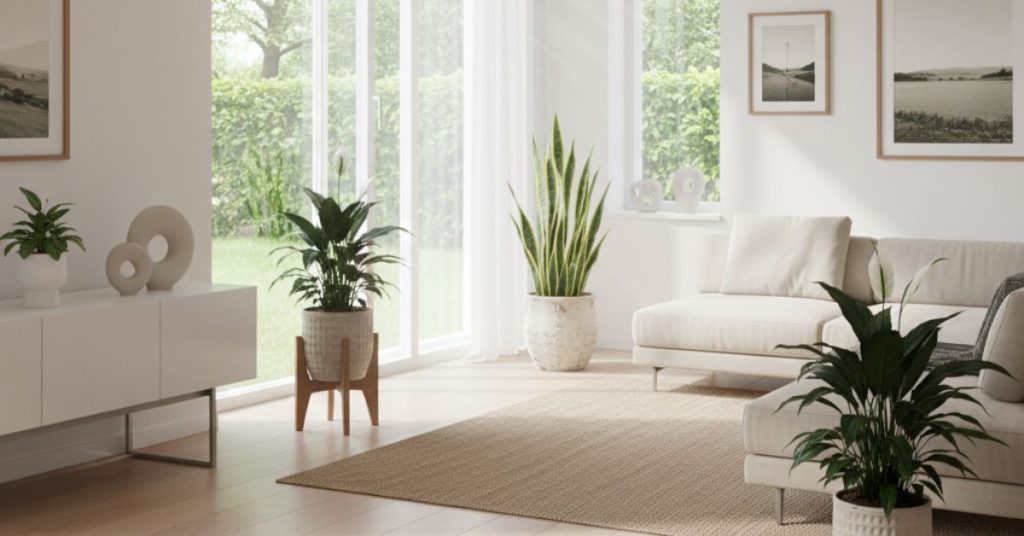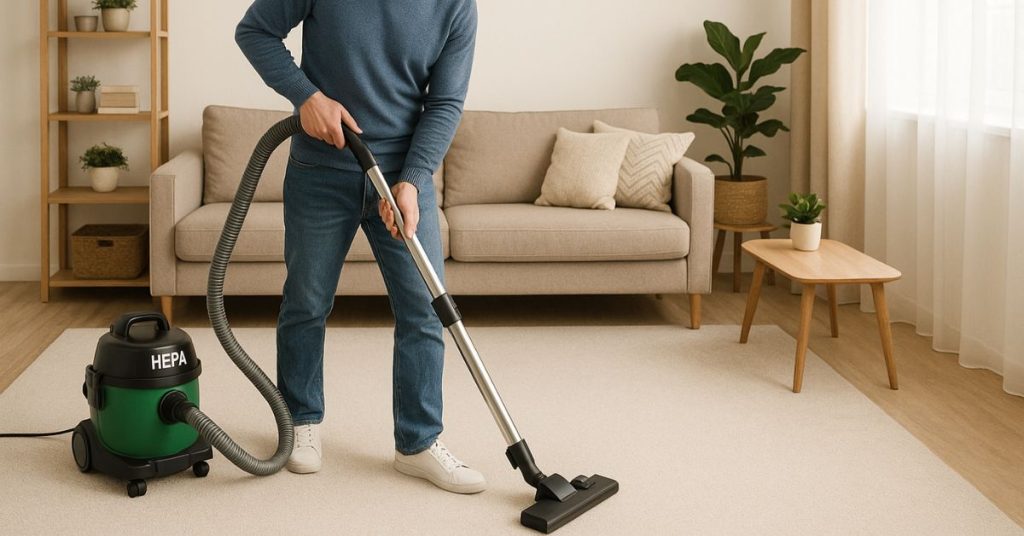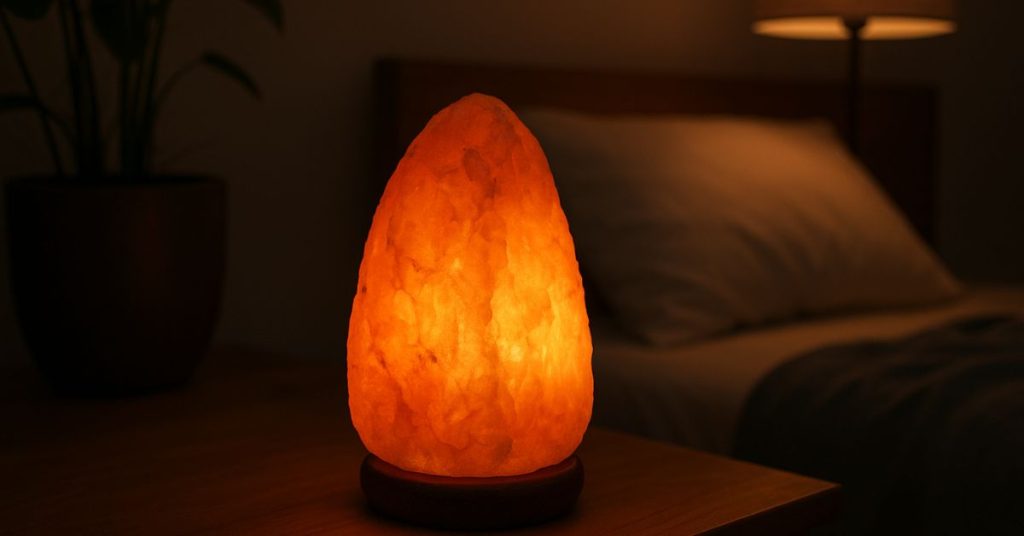Table of Contents
Maintaining healthy indoor air quality is essential for our well-being, especially since most of us spend the majority of our time indoors. Poor air quality can lead to allergies, respiratory problems, and overall discomfort. If you’re wondering how to improve indoor air quality naturally, the good news is that there are affordable and effective methods available. According to the U.S. Environmental Protection Agency (EPA), indoor air can often be more polluted than outdoor air, making natural air quality solutions increasingly important in daily life.
Without relying heavily on chemical products or costly equipment, you can take advantage of natural strategies to purify the air. Below, we will explore ten practical approaches that can significantly improve the air you breathe at home or in the workplace.
1. Let Fresh Air In Through Proper Ventilation
One of the simplest ways to enhance indoor air quality is to increase ventilation. Opening windows and doors for even a short time each day allows fresh air to circulate and flush out pollutants, odors, and moisture. Use cross-ventilation by opening windows on opposite sides of a room to create airflow. The U.S. Department of Energy (DOE) recommends proper ventilation strategies to reduce indoor pollutants and improve overall air quality in energy-efficient homes.
If outdoor air is clean in your area, you can also use ventilation fans in bathrooms and kitchens to remove smoke, cooking fumes, and excess humidity that can cause mold growth.
2. Add Indoor Plants for Natural Air Purification

Adding indoor plants is an easy and effective way to improve your home’s air quality. Some plants, such as peace lilies, spider plants, snake plants, and Boston ferns, are known to remove harmful toxins like benzene, formaldehyde, and trichloroethylene from the air. These plants act as natural air purifiers, making your living space cleaner and healthier.
Beyond their purifying qualities, indoor plants can also boost your mood, reduce stress, and create a more relaxing environment. For best results, place a few in different rooms and dust their leaves regularly to keep them functioning at their best.
3. Control Humidity Levels to Prevent Mold Growth
Controlling indoor humidity is essential for maintaining healthy air quality. Excess moisture encourages the growth of mold, mildew, and dust mites, which can lead to respiratory problems and allergies. Aim to keep humidity levels between 30% and 50%. Simple, natural solutions like placing bowls of salt or baking soda in damp areas can help absorb excess moisture and reduce humidity.
In larger or more humid areas, using a dehumidifier is an effective way to regulate moisture levels consistently. Also, check regularly for leaks around windows, sinks, and roofs to prevent hidden water damage. For detailed guidance on preventing mold growth, refer to the Centers for Disease Control and Prevention (CDC), which recommends prompt cleaning and drying to stop mold before it starts.
4. Use Beeswax or Soy Candles Instead of Paraffin
Traditional paraffin candles release volatile organic compounds (VOCs), which can degrade indoor air quality. Opt for beeswax or soy candles, which burn cleaner and release fewer toxins. Beeswax candles, in particular, emit negative ions that help neutralize pollutants and allergens like dust and pollen. This makes them a healthier alternative, especially for people with asthma or allergies.
Switching to these natural candles not only supports a cleaner indoor environment but also enhances your home’s atmosphere. Their gentle, natural scents and soft glow create a relaxing, cozy space without compromising air quality.
5. Eliminate Dust with Regular Cleaning
Dust contributes significantly to indoor air pollution, often carrying pet dander, pollen, mold spores, and chemical residues. Regular and thorough cleaning helps remove these harmful particles, improving the overall air quality in your home. To effectively reduce dust:
- Vacuum using a HEPA filter vacuum at least twice a week to capture fine particles.
- Wash bedding and curtains in hot water weekly to eliminate dust mites.
- Dust surfaces with a damp microfiber cloth to trap particles instead of scattering them.
- Keep clutter to a minimum, as it collects dust and makes cleaning more difficult.
Consistent cleaning reduces allergens and keeps your air fresher.

6. Use Essential Oils and Natural Diffusers
Synthetic air fresheners often contain chemicals that worsen indoor pollution. Instead, use essential oils such as eucalyptus, lavender, tea tree, or peppermint in natural diffusers. These oils not only provide a pleasant aroma but also have antibacterial and antiviral properties that may help purify the air.
For a simple DIY air freshener, mix water, baking soda, and a few drops of essential oil in a spray bottle and spritz around the home.
7. Choose Natural Cleaning Products
Harsh cleaning agents release toxic fumes and chemical residues that remain in the air. Switch to eco-friendly cleaning products or make your own using safe household ingredients. For example:
- White vinegar and water as an all-purpose cleaner.
- Baking soda for scrubbing sinks and deodorizing carpets.
- Lemon juice for removing stains and freshening surfaces.
- Olive oil mixed with lemon for polishing wooden furniture.
By eliminating chemical cleaners, you significantly reduce indoor pollutants while keeping your home fresh and safe.
8. Use Salt Lamps for Air Purification

Himalayan salt lamps are decorative lights made from natural pink salt crystals, believed by some to enhance indoor air quality. When warmed by the heat of an internal bulb, these lamps are thought to release negative ions, which may help neutralize pollutants such as dust, pollen, and smoke. While scientific support is limited, many people report noticeable benefits like easier breathing, fewer allergy symptoms, and improved sleep quality.
In addition to their potential air-cleansing effects, salt lamps offer other natural benefits:
- Help absorb moisture in the air, reducing humidity and mold risk.
- Trap airborne particles like dust and pet dander on their surface.
- Provide a warm, ambient glow that promotes relaxation and calm.
- Ideal for use in bedrooms, meditation areas, or living spaces.
Whether for their possible health benefits or their calming atmosphere, salt lamps can be a valuable and attractive addition to your home environment.
9. Improve Air Circulation with Natural Fans
Good air circulation is key to maintaining a healthy indoor environment. Stagnant air allows dust, odors, and airborne pollutants to build up, making the space feel stuffy and potentially harmful. Using ceiling or portable fans helps move air throughout the room, preventing buildup and promoting freshness. When possible, pair fans with open windows to bring in clean outdoor air.
However, in areas with high outdoor pollution—especially in busy cities—it’s best to keep windows closed during peak traffic hours. Instead, use fans to circulate indoor air and ensure your air filters are clean and functioning well.
10. Remove Shoes and Limit Indoor Pollutants
Preventing pollutants from entering your home is one of the most effective ways to maintain clean indoor air. Shoes can carry a variety of harmful substances like dirt, pesticides, bacteria, pollen, and even heavy metals from outside. Placing a shoe rack or mat near the entrance and asking everyone to remove their shoes before coming in helps keep these contaminants out.
Beyond footwear, reducing indoor pollution also involves making conscious lifestyle choices. Avoid smoking indoors, limit the use of aerosol sprays, and choose natural, low-emission materials for furniture and décor to minimize chemical exposure.
11. Schedule Professional HVAC Maintenance and Indoor Air Quality Services
While natural methods go a long way, professional care is essential for lasting results. Expert air duct cleaning helps remove hidden dust, allergens, and pollutants that cause poor indoor air quality and serious health effects of dirty air ducts. Regular air conditioning repair and heating maintenance ensure your system works efficiently year-round.
For thorough care, trust HVAC Alliance Expert, your local HVAC service company. Our skilled technician provides reliable solutions to keep your home comfortable, healthy, and energy-efficient. Don’t wait—schedule professional HVAC service today for cleaner, safer air indoors.
Conclusion: Breathe Easier with Natural Air Quality Solutions
Improving indoor air quality doesn’t always require expensive gadgets or harsh chemicals. With simple habits like regular cleaning, natural air purifiers, and humidity control, you can create a healthier, fresher environment for your family. Small changes truly make a big difference in the quality of the air you breathe every day.
For long-term peace of mind, don’t forget the importance of professional care. From air duct cleaning to system maintenance, trusted experts are here to help. If you’re ready for cleaner air, contact us today!
FAQs
Plants like peace lilies, spider plants, snake plants, and Boston ferns are excellent for removing toxins such as formaldehyde and benzene. They also release oxygen and help maintain humidity, making indoor air cleaner and more breathable.
Ideally, you should open windows for at least 10–15 minutes a day, especially in the morning or late evening when outdoor air quality is typically better. This helps flush out indoor pollutants and brings in fresh air.
Yes, essential oils like tea tree, eucalyptus, and lavender have antibacterial and antiviral properties that can help reduce airborne germs. Used in a diffuser or spray, they offer a natural alternative to chemical air fresheners.
While scientific evidence is limited, many users claim salt lamps help reduce allergy symptoms and create a relaxing environment. They may assist with air moisture balance and offer aesthetic and emotional benefits.
Shoes track in dirt, pesticides, bacteria, and pollutants from outside, contributing to poor indoor air quality. Leaving shoes at the door helps reduce the spread of contaminants and keeps your living space cleaner and healthier.


